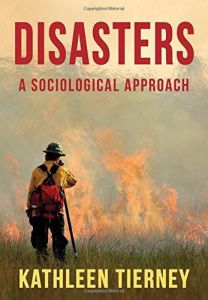Wildfires, hurricanes and other calamities aren’t areas of inquiry only for climate scientists, writes sociologist Kathleen Tierney. Natural disasters fall under the purview of social scientists like her, as she proves in this eye-opening examination of catastrophes. While it’s no surprise that poor people are more vulnerable to hurricanes and floods, Tierney applies demographic data to climatological events and details further risks to vulnerable populations. Her analysis of climate events and their societal risks is insightful and illuminating.
Disasters are increasing in severity and social significance.
From 1996 to 2005, some 1.5 million people died in disasters worldwide, while many more suffered injuries, illnesses and impoverishment. Much of the death toll affected developing nations, while the biggest economic losses occurred in rich countries. Just in 2017 – the year of Hurricanes Harvey, Irma and Maria – Munich Reinsurance reported that disasters exacted a worldwide toll of $330 billion. The other costs of catastrophes are harder to calculate. Disasters can drive economically vulnerable people into permanent poverty and cause lasting mental health issues for survivors.
Climate change promises to amplify the economic toll and societal costs of disasters. Extreme events are growing more common and more costly.
Large economies can recover from the financial setbacks of disaster, but struggling economies aren’t as resilient. While media coverage of calamities focuses on immediate damage, the effects are often long-lasting. For example, the 2017 wildfires in California denuded hillsides, leaving them vulnerable to landslides in subsequent...



















Comment on this summary